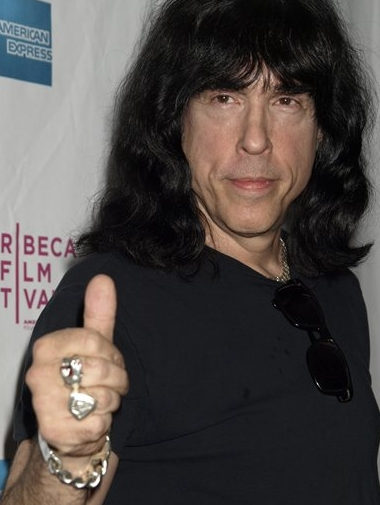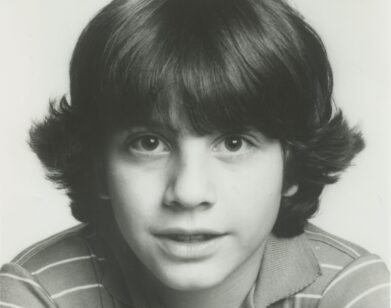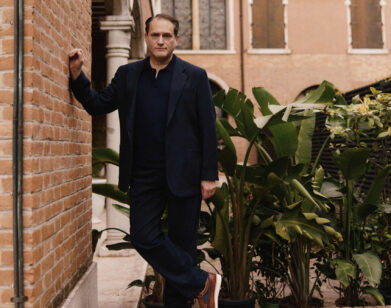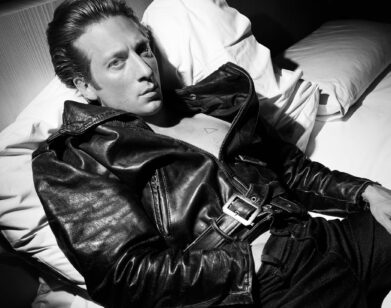Burning Down the House, Put Up Some Bathroom Doors

The Tribeca opening of Burning Down The House: The Story of CBGB had a somber tone, and it wasn’t just for the closing of the historic venue. Director Mandy Stein dedicated the film to her mother, the Ramones’ manager for years, Linda Stein, as she explained that the April 24 screening, “would have been her birthday today.” Linda was murdered October 30, 2007, in her home. (PHOTO: MARKY RAMONE AT THE PREMIERE, BY TINA PAUL)
The film begins with The Talking Heads song for which the film is named and features commentaries from Jim Jarmusch, Agnostic Front, Jesus Lizard, Henry Rollins, the founder of Punk Magazine Thurston Moore, Sting, and Michael Bloomberg—and a typically eclectic assortment of others. It combined recorded sets by The Ramones, Patti Smith, Blondie, and The Talking Heads, with discussion of the dangers of the Bowery and the Hell’s Angel, how Hilly Kristal tried to save his historic bar, and the deperate attempt to move to Las Vegas. Stein found her footage from a variety of sources: No Wave filmmaker Amos Poe was one; Kristal also proved an impressive archivist. In fact the project began when Stein called Kristal, whom she’d known growing up. Stein recalls that upon presenting the project, Kristal was ethusiastic, to say the least: “He said, ‘Jump on a plane, let’s figure this out!'” The enthusiasm was surely matched by Stein’s next documentary subject, Eddie Antar—Crazy Eddie, of “Our prices are insane” fame. She’s also completing another music documentary about Bad Brains, which will wrap by the end of the summer.
The story of CBGBs is technically a tragedy; it ended up John Varvatos’ Bowery location. But Kristal supports the transformation, explaining, “John [Varvatos] is such a huge lover of music and he did everything he possibly could to keep everything in tact. He’s definitely devoted to music and keeping music in that space.” Photographer Bob Gruen, whose famous picture of John Lennon hangs in the storefront of the Morrison Hotel photo shop next door, is similarly positive: “Someone has to be there. It’s better than there being a Gap.” He, too, thinks Varvatos was a natural next tenant: “At least John has a real rock and roll spirit. He’s actually got bands playing there once a month. New York Dolls are going to premiere their album there.”
The band most associated with CBGBs is probably the Ramones. Marky Ramone was there in full form, presumably for the free entertainment. He remembers CBGBs as a bar where “the drinks were free, that’s what I like. And Hilly let us play there, and start punk rock.” Marky attributes the birth of punk to Kristal and his bar, where he and would hang out with Richard Hell: “If it wasn’t for Hilly letting us play there, there might not have been a Ramones, and if the Ramones didn’t played, CBGBs might not have gotten to where they were.”
Was there anything that Ramone would have changed about the old CBGBs? “I have a funny memory, when you had to go to the bathroom, the toilet, there were no doors. I mean, come on Hilly, put up some doors.”






